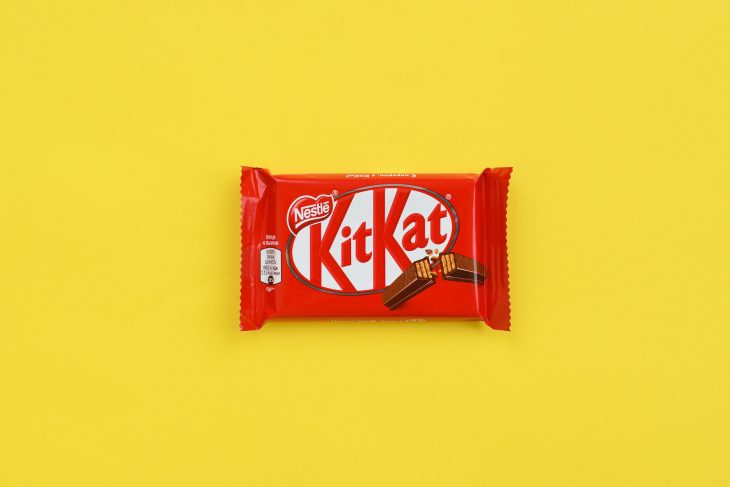
It’s time to give in to that nagging craving for a Kit Kat bar. But don’t let your indulgence be an unhealthy one – you don’t want your sweet treat turn into regretful food guilt! That’s why it pays off to know the nutrition facts about this chocolate-covered wafer snack beforehand, so you can make better-informed decisions when reaching for that tasty treat. Read on and learn 15 surprising facts about Kit Kat nutrition – from calorie counts and sugar content, to the range of vitamins found in the bars. Happy snacking!
Serving Size
A standard serving size for a Kit Kat bar is typically one four-piece bar, or 42 grams. This is the most common size found in stores, but there are also snack-sized versions and miniatures available, which have smaller serving sizes and different nutritional values.
Calories
A four-piece Kit Kat bar contains 210 calories. Keep in mind that this number can vary depending on the size and flavor of the Kit Kat you choose.
Fat Content
Each four-piece Kit Kat bar contains 11 grams of fat, with 7 grams of that being saturated fat. It’s important to watch your saturated fat intake, as it can raise your LDL (bad) cholesterol levels and increase your risk of heart disease.
Carbohydrates
A standard Kit Kat bar has 27 grams of carbohydrates, which include 20 grams of sugar and less than 1 gram of dietary fiber. Monitoring your sugar intake is important for maintaining a healthy diet and preventing health issues such as diabetes.
Protein
Kit Kat bars contain 3 grams of protein per serving. While not a significant source of protein, it’s still a small contribution to your daily protein needs.
Sodium
Each four-piece Kit Kat bar contains 30 milligrams of sodium. This is a relatively low amount, making it a suitable snack for those watching their sodium intake.
Allergen Information
Kit Kats contain wheat, milk, and soy ingredients, making them unsuitable for individuals with allergies or sensitivities to these ingredients. Some Kit Kat varieties may also contain peanuts, tree nuts, or other allergens, so always check the label for allergen information.
Gluten-Free Alternatives
For those with gluten sensitivities, there are gluten-free alternatives available from other brands that mimic the crispy wafer and chocolate combination found in Kit Kats.

Dark Chocolate Kit Kat
For those who prefer a more intense chocolate flavor, Dark Chocolate Kit Kats are available. These bars have a slightly higher calorie count at 220 calories per serving, with 12 grams of fat, 28 grams of carbohydrates, and 2 grams of protein.
White Chocolate Kit Kat
White Chocolate Kit Kats offer a sweeter, creamier taste with 220 calories per serving, 11 grams of fat, 28 grams of carbohydrates, and 3 grams of protein.
Matcha Green Tea Kit Kat
Popular in Japan, Matcha Green Tea Kit Kats have a unique flavor and contain around 208 calories per serving, 10 grams of fat, 28 grams of carbohydrates, and 2 grams of protein.
Fun Size Kit Kats
If you’re looking for a smaller treat, Fun Size Kit Kats are available and contain around 70 calories each, with 3 grams of fat, 9 grams of carbohydrates, and 1 gram of protein.
Mini Kit Kats
Mini Kit Kats are another portion-controlled option, containing about 42 calories each, with 2 grams of fat, 6 grams of carbohydrates, and less than 1 gram of protein.
Limited Edition Flavors
Kit Kat is known for its wide variety of limited-edition flavors, especially in countries like Japan. These flavors can have different nutritional profiles, so be sure to check the label if you’re trying a new flavor.

Moderation is Key
While Kit Kats are a delicious and tempting treat, it’s important to remember that they should be enjoyed in moderation as part of a balanced diet. Consuming too much added sugar can lead to weight gain and other health issues.
More About Kit Kat
Storage Tips
To maintain the best taste and texture, store Kit Kat bars in a cool, dry place away from direct sunlight. Avoid storing them in hot environments, as this can cause the chocolate to melt and become less appealing.
Kit Kat History
Kit Kat bars were first created in 1935 by the British confectionery company Rowntree’s. They were originally called “Rowntree’s Chocolate Crisp” and later renamed “Kit Kat” in 1937. Today, Kit Kat is produced globally by Nestlé, with the exception of the United States, where it is made by the Hershey Company.
Fun Fact: The Iconic Jingle
The catchy Kit Kat jingle, “Gimme a break, gimme a break, break me off a piece of that Kit Kat bar“, was first introduced in 1986 and has since become an iconic advertising tune.
Conclusion
The classic Kit Kat is one of many different types of snacks available, and understanding its nutritional facts is essential before indulging. While it may be tempting to indulge in unhealthy treats regularly, taking the time to understand what goes into them can help you make smarter decisions and even craft a balanced diet. No snack is bad if consumed in moderation – Kit Kats included! So go ahead – enjoy a bar as an occasional treat and reward yourself for a job well done. Don’t forget: Sweet rewards are always better when snacked on responsibly.
Was this page helpful?
Our commitment to delivering trustworthy and engaging content is at the heart of what we do. Each fact on our site is contributed by real users like you, bringing a wealth of diverse insights and information. To ensure the highest standards of accuracy and reliability, our dedicated editors meticulously review each submission. This process guarantees that the facts we share are not only fascinating but also credible. Trust in our commitment to quality and authenticity as you explore and learn with us.
